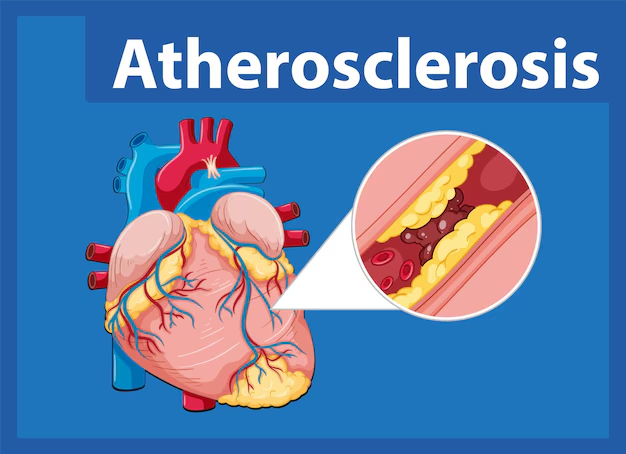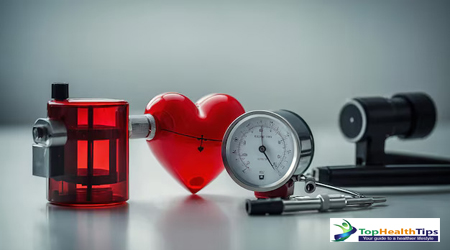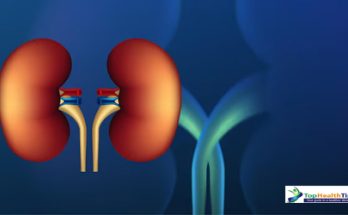Introduction
High blood pressure (hypertension) and atherosclerosis are two of the most common cardiovascular conditions. While they are separate conditions, they are deeply interconnected, each worsening the effects of the other. Understanding this connection is crucial for preventing serious complications like heart attacks and strokes. This article explores the relationship between high blood pressure and atherosclerosis, highlighting the science behind them, and how lifestyle choices can help manage both.
What Is High Blood Pressure?
High blood pressure (hypertension) occurs when the force of blood against artery walls is consistently too high. This constant pressure can damage blood vessels, forcing the heart to work harder to pump blood. Over time, this stress can lead to serious complications, including atherosclerosis.
- Normal blood pressure: Below 120/80 mmHg
- Elevated blood pressure: 120–129/<80 mmHg
- Stage 1 Hypertension: 130–139/80–89 mmHg
- Stage 2 Hypertension: ≥140/≥90 mmHg
Chronic high blood pressure often goes unnoticed because it develops over years and presents few, if any, symptoms.
What Is Atherosclerosis?
Atherosclerosis refers to the hardening and narrowing of the arteries due to plaque buildup. Plaque consists of fat, cholesterol, and other substances that can accumulate in the arterial walls, restricting blood flow.
Key contributors to plaque formation include:
- High LDL cholesterol
- Inflammation
- Smoking
- Uncontrolled blood pressure
Atherosclerosis is a progressive condition, and when arteries are blocked, it can result in major cardiovascular events such as heart attacks or strokes.
The Connection Between High Blood Pressure and Atherosclerosis

1. Damage to the Arterial Walls
High blood pressure can weaken the inner lining of arteries (endothelium). When this lining is compromised, it becomes easier for cholesterol, fats, and other particles to stick to the walls and form plaque, accelerating atherosclerosis.
2. Hardening of Arteries
Atherosclerosis makes the arteries stiff and less elastic. This rigidity increases resistance against the flow of blood, further elevating blood pressure. This sets up a vicious cycle where both conditions exacerbate one another.
3. Reduced Blood Flow and Oxygen
As arteries narrow due to atherosclerosis, less oxygen-rich blood reaches vital organs. The heart, brain, and other organs are particularly vulnerable. High blood pressure places even more strain on these narrowed arteries, increasing the risk of heart attacks, strokes, and other complications.
4. Inflammation and Oxidative Stress
Chronic high blood pressure leads to inflammation in the arteries, increasing the likelihood of plaque formation. The presence of reactive oxygen species (ROS) further damages the arterial lining, compounding the risk of atherosclerosis.
Risk Factors Linking Hypertension and Atherosclerosis
The same risk factors often contribute to both high blood pressure and atherosclerosis. These include:
- Smoking: Damages blood vessels and increases plaque formation.
- High cholesterol: Excess cholesterol contributes to plaque buildup.
- Diabetes: High blood sugar levels damage blood vessels, promoting both conditions.
- Obesity: Excess body weight strains the heart and raises blood pressure.
- Sedentary lifestyle: Lack of physical activity weakens the cardiovascular system.
- Poor diet: Diets high in saturated fats, salt, and sugar increase cholesterol and blood pressure levels.
How to Manage Both Conditions
1. Diet Modifications
A heart-healthy diet is key to managing both high blood pressure and atherosclerosis. Follow the DASH (Dietary Approaches to Stop Hypertension) or Mediterranean diet, which are rich in fruits, vegetables, whole grains, lean proteins, and healthy fats.
Key foods to include:
- Leafy greens (rich in potassium to lower blood pressure)
- Oats (high in fiber to reduce cholesterol)
- Nuts and seeds (contain healthy fats)
- Berries (rich in antioxidants)
- Fish (especially fatty fish like salmon, high in omega-3s)
Foods to avoid:
- Processed meats
- Sugary drinks
- Foods high in saturated and trans fats
- Excess salt
2. Regular Physical Activity
Exercise strengthens the heart, reduces plaque buildup, and lowers blood pressure. Aim for 150 minutes of moderate-intensity exercise per week, such as brisk walking, swimming, or cycling.
3. Quit Smoking
Smoking accelerates both high blood pressure and atherosclerosis. Quitting reduces inflammation and improves vascular function, which can lower the risk of heart attacks and strokes.
4. Medication Management
For those with hypertension and atherosclerosis, medications may be necessary. Common drugs include:
- ACE inhibitors: Lower blood pressure and reduce arterial tension.
- Statins: Reduce cholesterol levels and plaque formation.
- Beta-blockers: Help the heart work more efficiently.
- Diuretics: Help the body eliminate excess sodium and water, lowering blood pressure.
5. Stress Management
Chronic stress can raise blood pressure. Incorporate relaxation techniques such as:
- Meditation
- Yoga
- Deep breathing exercises

Complications of Untreated Conditions
Leaving high blood pressure and atherosclerosis untreated can lead to severe complications, including:
- Heart attack: Blocked coronary arteries can cut off blood supply to the heart.
- Stroke: Blocked arteries in the brain can result in a stroke.
- Kidney disease: Damaged arteries in the kidneys impair their function.
- Peripheral artery disease: Narrowed arteries in the limbs cause pain and restricted blood flow.
Conclusion
High blood pressure and atherosclerosis are closely intertwined, each contributing to the progression of the other. By understanding the connection between these conditions and taking proactive steps—such as improving diet, exercising, and managing stress—you can significantly reduce the risk of serious cardiovascular events. Managing both conditions through lifestyle changes and medical interventions not only protects the heart but also ensures a healthier, longer life.
Related posts for Disease & Remedy>>>
References:
- American Heart Association – High Blood Pressure Resources
- Mayo Clinic – Atherosclerosis Overview
- National Heart, Lung, and Blood Institute (NHLBI) – Hypertension and Heart Disease
- PubMed – Relationship Between Hypertension and Atherosclerosis (Journal of Cardiology, 2022)
- British Heart Foundation – Managing Atherosclerosis




